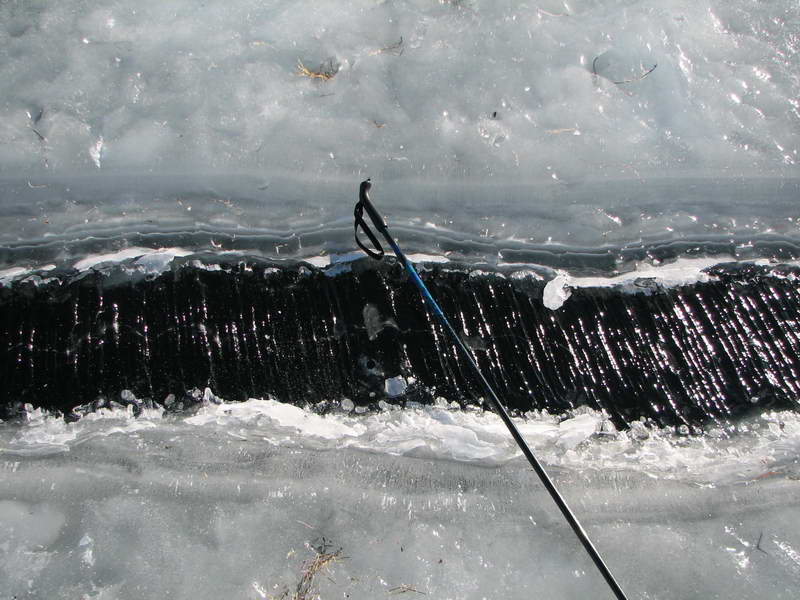 10" Spring Tectonic Crack, early in the moring before the overnight ice has ruptured.
10" Spring Tectonic Crack, early in the moring before the overnight ice has ruptured.
Spring Tectonic Cracks
Typical spring ice is thick and has been through enough melting sun driven internal melting to partially melt the grain boundaries. Most of the pressure ridges have melted down and frozen into the ice sheet. The expansion and contraction in the ice is accommodated by an evolution of tectonic cracks.
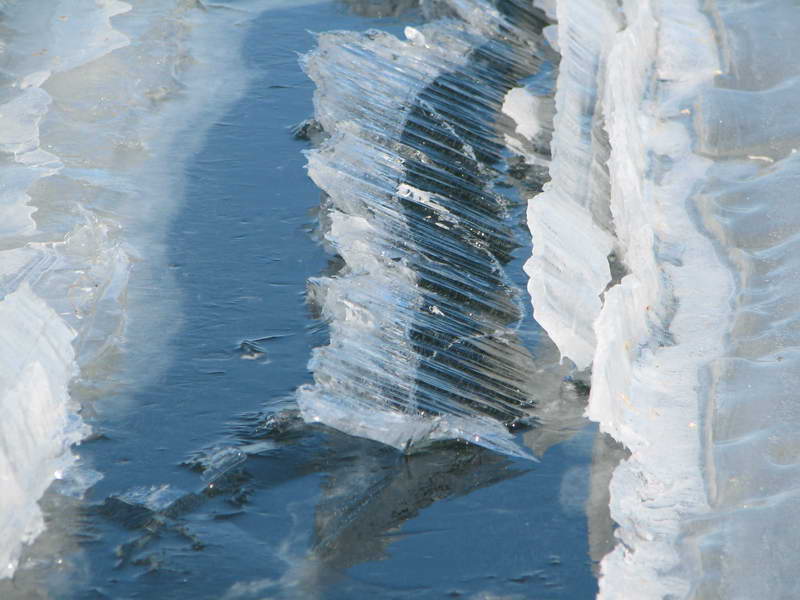 This is the same crack as above after the overnight ice has ruptured and is starting to get pushed up.
This is the same crack as above after the overnight ice has ruptured and is starting to get pushed up.
They have the same irregular trace that they do in mid-winter. Over night they pull apart several inches as the ice sheet cools . During the day they close. On a warm sunny day they will close completely. As pressure builds further it can force one plate up and one down depending on the average local vertical angle of the sides of the crack.
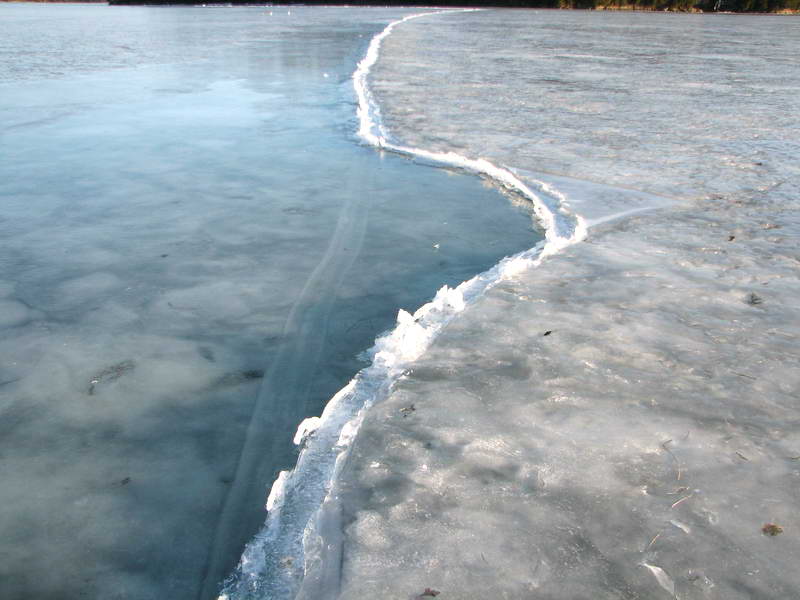 Later in the afternoon of a warm day this crack is completely closed and has 3 to 4" of vertical offset . The little 'bay' has 7" of vertical offset. Note the wide puddle on the left side. Scale: The white strip of overnight ice on the raised side of the crack is about 5" wide.
Later in the afternoon of a warm day this crack is completely closed and has 3 to 4" of vertical offset . The little 'bay' has 7" of vertical offset. Note the wide puddle on the left side. Scale: The white strip of overnight ice on the raised side of the crack is about 5" wide.
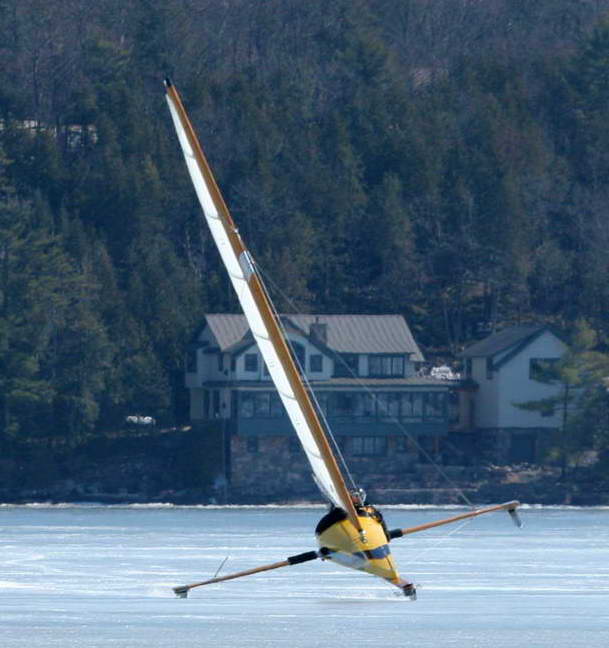
This is a Yankee Iceboat. Its runners are 5" high. Later this day, I watched from a distance as several of them crossed a vertically offset crack in the 'wrong' direction. I was sure one of them would crash but they all made it, often by smashing out the top edge of the high side of the crack. My guess is another inch of offset would have meant broken boats and, potentially, an injured skipper. The puddle along the crack is an indication of potential trouble. In my opinion, cracks like this should always be crossed by walking the boat over them.
Sometimes if the vertical displacement exceeds the ice thickness it will become an overlapped ridge. When this happens it can be very dramatic as this suddenly releases a lot of compression strain that has built up in the thick ice sheet.
Overnight ice frequently forms across the crack. If it gets reasonably thick it may rupture loudly when the warming sheet pushes on it the next morning. Other times it slowly pushes the overnight into a vertical curtain a few inches high as the crack closes.
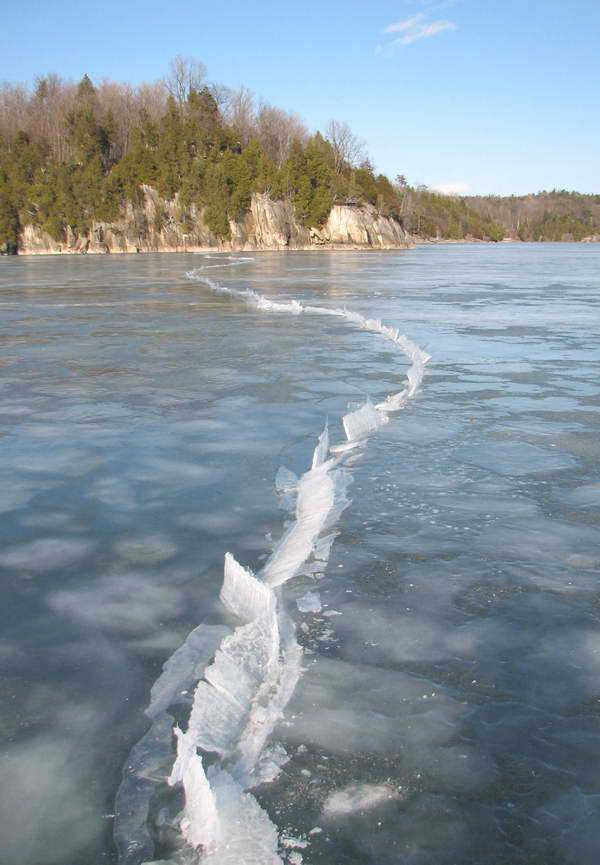 This crack is mostly closed by mid afternoon. The Overnight ice has been pushed into a vertical curtain about 6" high.
This crack is mostly closed by mid afternoon. The Overnight ice has been pushed into a vertical curtain about 6" high.
On Lake Champlain this is often the best time to go long distances on the ice. On a good year the pressure ridges are down but have not melted away, the jumbled ice and ice sharks have been melted flat, the ice is thick and, during cooler spells the ice is hard and smooth enough for sailing or skating. There are still usually places to get in trouble but you can go places that were difficult to get to earlier in the winter.
It appears that this change from expansion and contraction being accommodated in ridges to spring tectonic cracks is related to some or all of the following factors:
- The ice is thick and does not change temperature as fast as when it was thinner.
- There is some melted water at grain boundaries that absorbs cooling as latent heat rather than reducing temperature.
- Only the top of the sheet freezes leaving the bottom at 32 degrees with partially melted grain boundaries.
